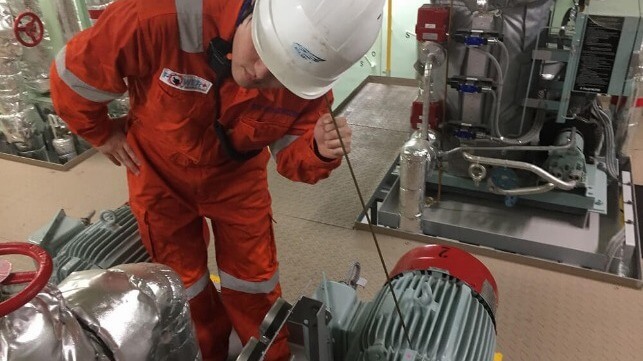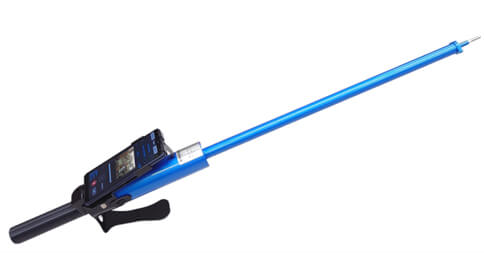Crew’s Old Fashioned Listening Rod Goes High-Tech

Japan’s NYK (Nippon Yusen Kabushiki Kaisha) has added a new diagnostic tool to its efforts at using technology to detect machinery issues before they become problems. Predictive technology to aid with preventative maintenance is becoming increasingly important to maintain a ship’s productivity and reduce lost time due to failures and required maintenance.
Engineers have long used sound to detect issues in their plants. A good engineer has been known to walk around which their head slightly cocked and listening to the plant with the ability to hear when something might be emerging or not operating to peak efficiency. They also use tools such as listening rods to diagnose the condition of equipment.
By placing a listening rod on a turbine, motor, or other equipment, the operational sound of the object can be captured without being affected by ambient noise, and invisible abnormalities can be detected. Listening rods, however, present difficulties because the sound cannot be accumulated as data and shared with third parties.
NYK working with MTI (Monohakobi Technology Institute) and Nabtesco has developed a new high-tech version of the listening rod for use by engineers onboard ships or other industrial settings. According to the companies, the new tool records, visualizes, and analyzes the operational sounds of a vessel's engine plant for early anomaly detection. The device can store operational sounds from plants as data and use it to diagnose ship-equipment conditions.

Japan's new high-tech version of a listening rod (Nabtesco)
Named Kirari MUSE it is comprised of an electric listening rod, a dedicated smartphone as an operation device, and PC software. The electric rod has a recording function, and the PC software enables the recording, analysis, and sharing of sounds by seafarers during patrols as chart and graph data. An alarm appears on the software if the sound data deviates from the set reference data. The dedicated smartphone is utilized for operations such as selecting the device to be inspected, recording memos during inspection, and transferring the data to the software.
By accumulating sound as data, Kirari MUSE helps NYK to compare the sound data with threshold and past data. In addition, it does not require past experience with the equipment or knowledge from seafarers. In addition, the data can be shared with ships and onshore operations, or third-party vendors and manufacturers, to enhance support for diagnosis and repairs.
Kirari MUSE does not require connection to external software and can also be used for non-marine equipment. Nabtesco put the tool starting today, October 18, and they expect it will enhance productivity and encourage greater safety in machinery operations.
